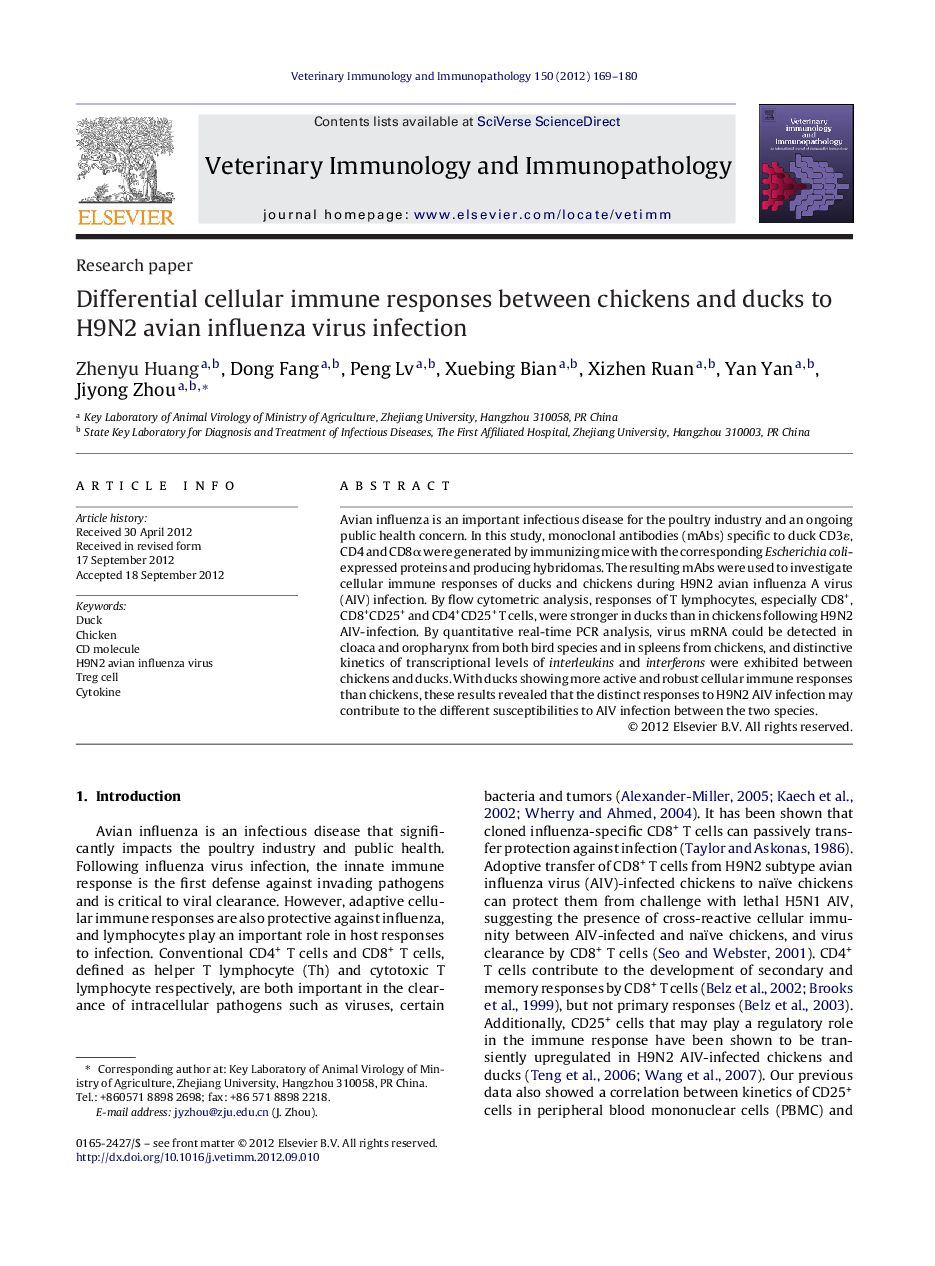| Article ID | Journal | Published Year | Pages | File Type |
|---|---|---|---|---|
| 2461785 | Veterinary Immunology and Immunopathology | 2012 | 12 Pages |
Avian influenza is an important infectious disease for the poultry industry and an ongoing public health concern. In this study, monoclonal antibodies (mAbs) specific to duck CD3ɛ, CD4 and CD8α were generated by immunizing mice with the corresponding Escherichia coli-expressed proteins and producing hybridomas. The resulting mAbs were used to investigate cellular immune responses of ducks and chickens during H9N2 avian influenza A virus (AIV) infection. By flow cytometric analysis, responses of T lymphocytes, especially CD8+, CD8+CD25+ and CD4+CD25+ T cells, were stronger in ducks than in chickens following H9N2 AIV-infection. By quantitative real-time PCR analysis, virus mRNA could be detected in cloaca and oropharynx from both bird species and in spleens from chickens, and distinctive kinetics of transcriptional levels of interleukins and interferons were exhibited between chickens and ducks. With ducks showing more active and robust cellular immune responses than chickens, these results revealed that the distinct responses to H9N2 AIV infection may contribute to the different susceptibilities to AIV infection between the two species.
